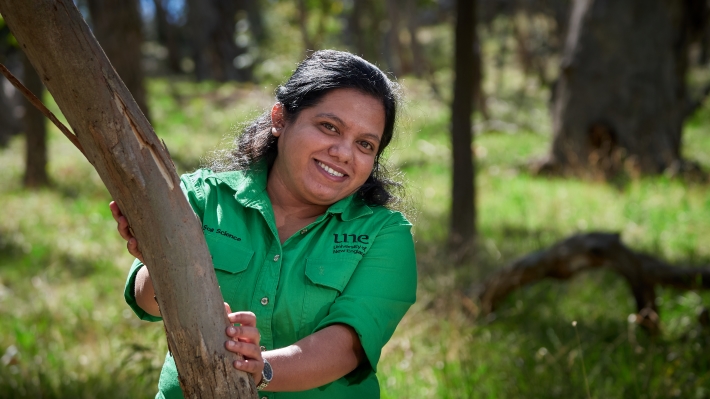The team led by Associate Professor Brian Wilson and PhD student Apsara Amarasinghe (and including Associate Professor Lisa Lobry de Bruyn, Dr Oliver Knox and Christine Fyfe) compared environmental plantings of native trees and shrubs (eucalypts and acacias) to nearby cleared pasture lands and remnant woodlands at four key sites across NSW.
They found that the environmental plantings not only boosted the number and variety of microbes (bacteria and fungi) in the soil, but that the microbial presence consequently enhanced levels of total soil carbon, nitrogen and extractable phosphorus.
And the great news is that these benefits - essential for good soil structure, soil health and plant growth - increase over the lifetime of the plantings.
"The ecosystem benefits of plantings to soil carbon and phosphorous levels have been observed in the past, but this is the first scientific evidence we have of the impact on soil microbiology," said Associate Professor Wilson, who leads the Terrestrial Carbon Research Group (TCRG) at UNE.
"Apsara has successfully shown that degraded lands can be recovered in terms of soil nutrients and microbial activity."
Apsara said finding a positive correlation between microbial activity and the levels of carbon, nitrogen and phosphorus will have many applications. "This will provide evidence for farmers looking to rehabilitate farmland, as well as other land managers, educators, extension staff, regional and state government agencies," she said.
The research has relied on native vegetation restoration Associate Professor Wilson began 20-25 years ago in collaboration with colleagues in State Government, which now stretches across the State's sheep wheatbelt from Armidale to Wagga Wagga. "Soil biodiversity is the new biological frontier," he said. "This work takes us into an area that has largely remained unexplored. It shows that for all the benefits of trees and shrubs above ground, providing important habitat and shelter, the bulk of the biodiversity is below ground, in the soil. As the environmental planting grows and matures, the below ground population of microbes is similarly growing, expanding and diversifying.
"Charting the trajectory of soil biological changes as land is restored to a more native system, we see the microbial population blossom. These microbes are a proxy for environmental repair and now we can demonstrate with some degree of certainty the efficacy of using this land management approach."
The TCRG's research contributes to a growing body of international data on this subject, but is unique in that it provides a chronological sequence for improvements to microbial activity. "Measuring change over time - that hasn't happened anywhere else on this continent and is a first," Associate Professor Wilson said.
So just how do you measure microbial activity in the soil?
All microbes generate carbon dioxide through respiration. The amount released per gram of soil per unit time is measured using an indicator dye that changes colour proportionately to the amount of carbon dioxide. The light absorbance values of the dye before and after the colour change can then be used to calculate the rate of CO2 respiration per gram of dry soil using already developed formula, and the amount of respiration gives us a measure of the extent of microbial activity.
The researchers also added different nutrient substrates to the soil, and measured the amount of carbon dioxide released. This helped to determine the functional diversity of the microbes in soil because some microbial populations are better at using particular substrate/s than others.
While Aspara found that environmental plantings boost microbial and soil nutrient status, it was not equivalent to that of a remnant vegetation system. It may take decades to completely recover a cleared landscape through environmental plantings.


